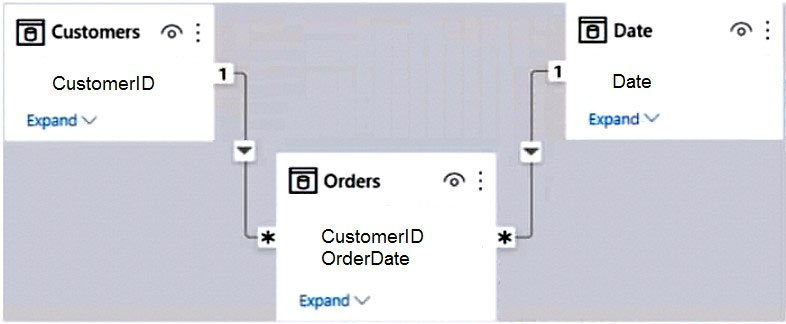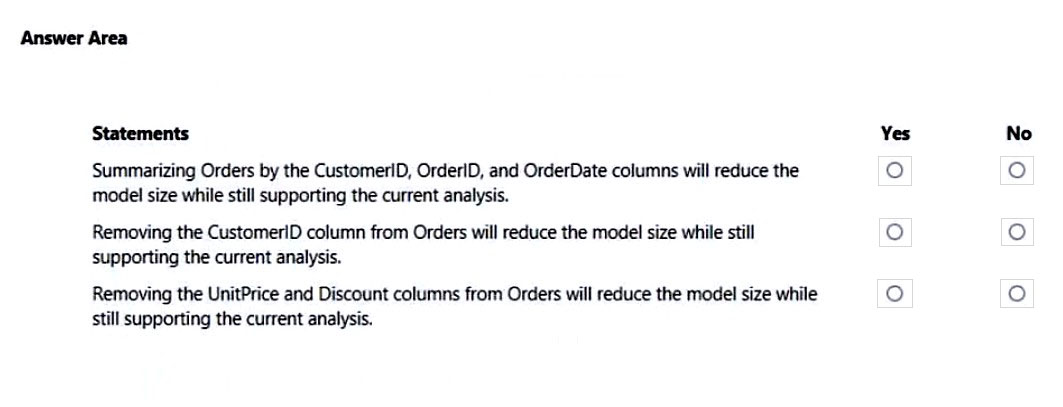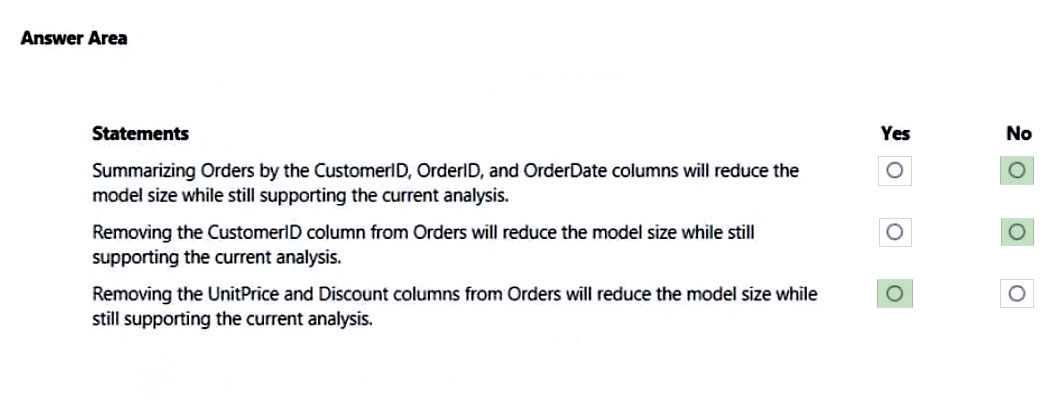HOTSPOT -
You have a Power BI report named Orders that supports the following analysis:
✑ Total sales over time
✑ The count of orders over time
✑ New and repeat customer counts
The data model size is nearing the limit for a dataset in shared capacity.
The model view for the dataset is shown in the following exhibit.

The data view for the Orders table is shown in the following exhibit.

The Orders table relates to the Customers table by using the CustomerID column.
The Orders table relates to the Date table by using the OrderDate column.
For each of the following statements, select Yes if the statement is true, Otherwise, select No.
NOTE: Each correct selection is worth one point.
Hot Area:

